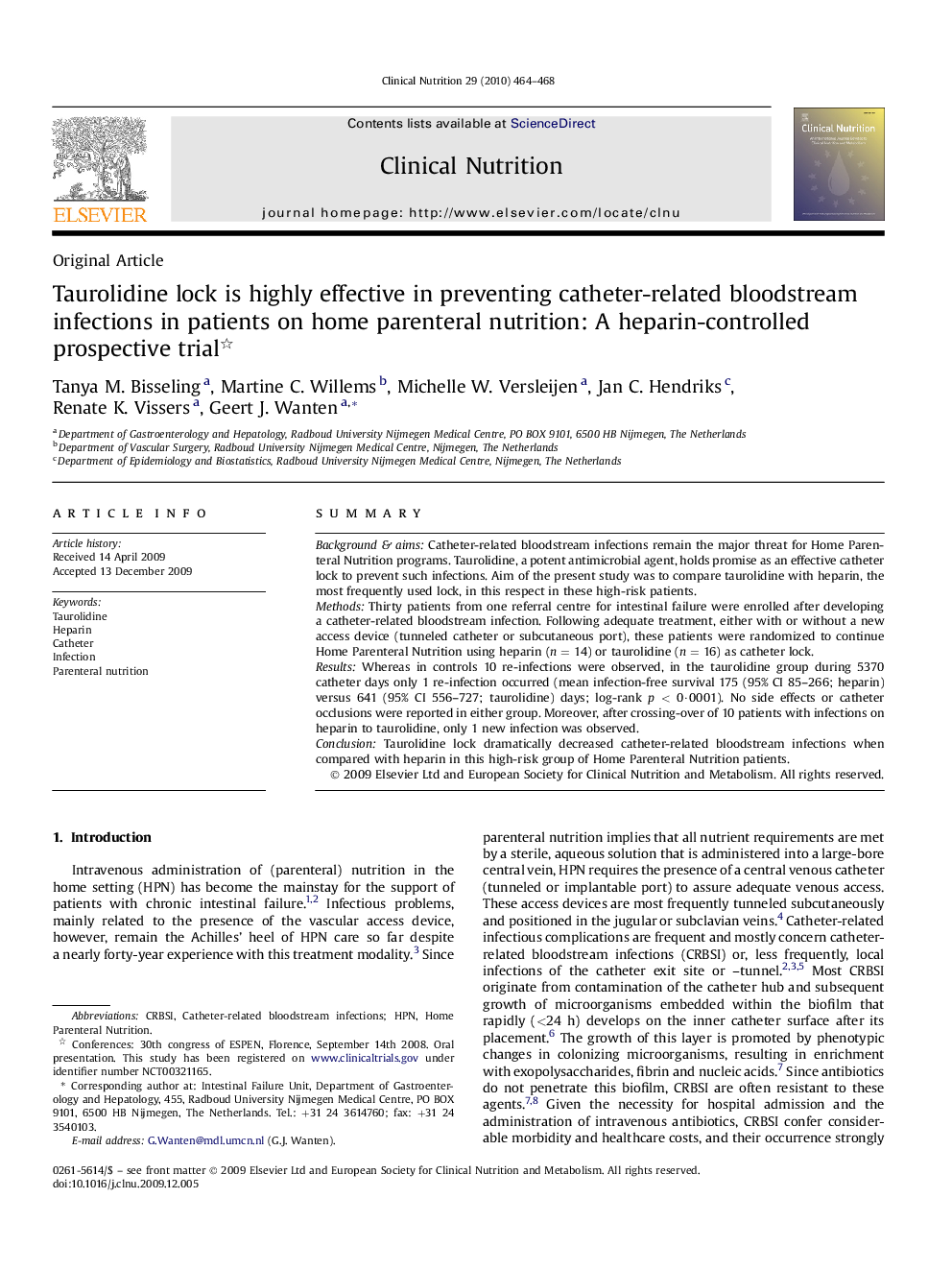| Article ID | Journal | Published Year | Pages | File Type |
|---|---|---|---|---|
| 2683205 | Clinical Nutrition | 2010 | 5 Pages |
SummaryBackground & aimsCatheter-related bloodstream infections remain the major threat for Home Parenteral Nutrition programs. Taurolidine, a potent antimicrobial agent, holds promise as an effective catheter lock to prevent such infections. Aim of the present study was to compare taurolidine with heparin, the most frequently used lock, in this respect in these high-risk patients.MethodsThirty patients from one referral centre for intestinal failure were enrolled after developing a catheter-related bloodstream infection. Following adequate treatment, either with or without a new access device (tunneled catheter or subcutaneous port), these patients were randomized to continue Home Parenteral Nutrition using heparin (n = 14) or taurolidine (n = 16) as catheter lock.ResultsWhereas in controls 10 re-infections were observed, in the taurolidine group during 5370 catheter days only 1 re-infection occurred (mean infection-free survival 175 (95% CI 85–266; heparin) versus 641 (95% CI 556–727; taurolidine) days; log-rank p < 0·0001). No side effects or catheter occlusions were reported in either group. Moreover, after crossing-over of 10 patients with infections on heparin to taurolidine, only 1 new infection was observed.ConclusionTaurolidine lock dramatically decreased catheter-related bloodstream infections when compared with heparin in this high-risk group of Home Parenteral Nutrition patients.
